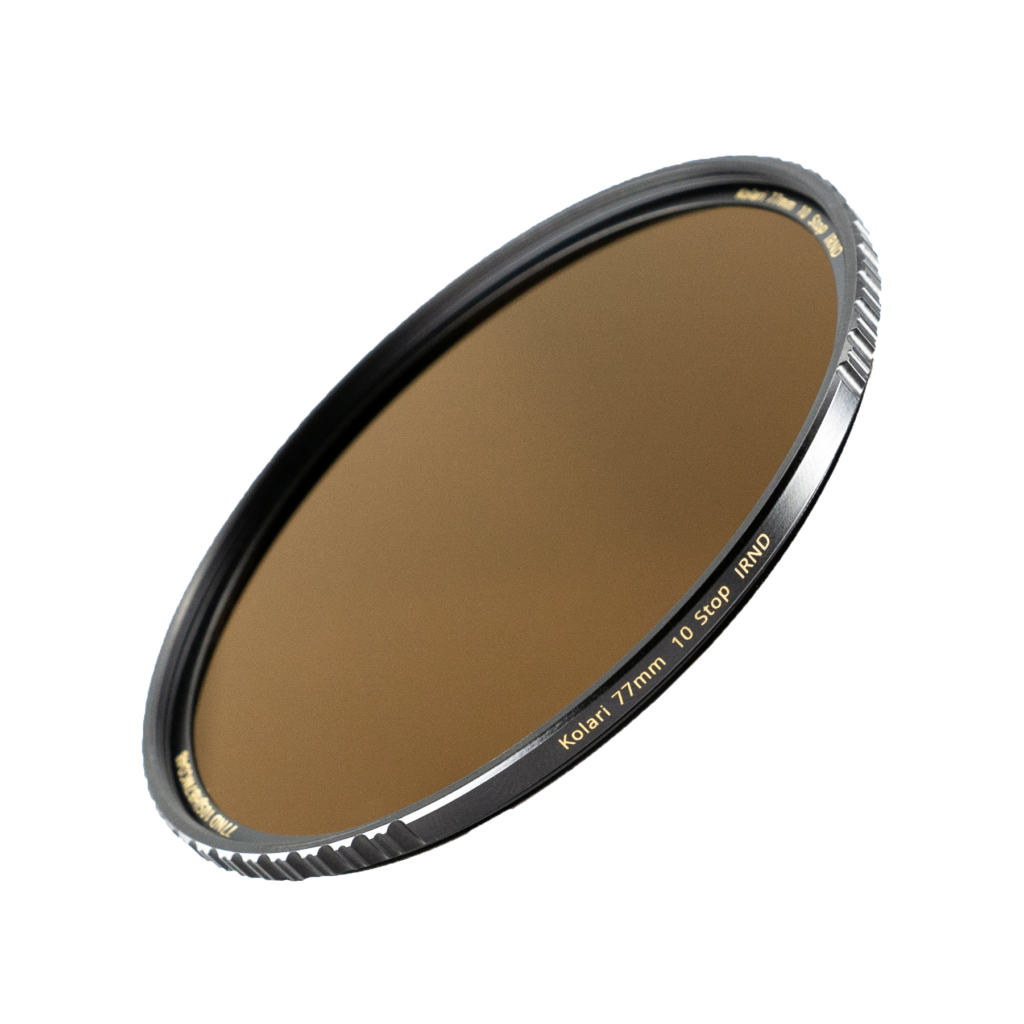Expanding our Capability Horizons
What makes a good neutral density filter? It’s in the name. The best ND filter should be as neutral as possible in its consistent light reduction across your entire image, for all colors, and at all focal lengths. A great 10-stop ND, for example, should always reduce light by a consistent 10-stops without causing vignetting, color casts, or loss of sharpness. Most well made ND filters do a decent job of meeting this criteria, and there are plenty of articles and videos out there discussing which filters do it well. Infrared photographers, however, have a much harder time finding glass that can provide this neutral darkening effect reliably for their creative medium when most of it made for visible light. That’s why we decided to make an ND filter that can do both.
The game changes when you switch spectrums into something the human eye can’t see and that an unmodified camera can’t detect. Infrared photography presents a set of unconventional challenges for conventional equipment, especially neutral density filters. While a 10-stop ND may perform very well in normal conditions, it is likely to be far less predictable when used for infrared photography or filters that use a combination of infrared and visible light. Your trusty neutral 10-stop ND may behave more like a 5-stop, or a 15-stop with an ugly color cast. Shooting in an alternative light spectrum renders ND filters somewhat inconvenient at best to totally unusable at worst. Light leaks and loss of sharpness are also common, but this is no fault of ND manufacturers. They aren’t making a product intended to be used with the full-spectrum of light illustrated by the diagram above. But, with infrared photography as well as infrared cinematography on the rise, especially when considering the amount of cinema cameras that have removeable OLPFs, professionals have an increasing need for ND filters that are consistently dark and 100% color neutral well out into the near infrared wavelengths. This is why Kolari Vision has released an ND filter that provides exceptional neutrality, from 350nm all the way out too 1000nm in the near-infrared spectrum.
While this filter is engineered specifically to the constraints of an IR or full-spectrum photographer, our IRND can be used for regular old visible light photography and videography as well. This glass is truly indifferent to whatever wavelength of light is passing through it, and because of these constraints, it actually delivers better results in more traditional visual art mediums. The glass is made to match the spectral sensitivity of a camera sensor, which includes near UV and IR, rather than just the visible light that an OLPF filters for. We think pushing the industry in this direction will lead to more versatile optics that enable a wider range of creative choices without sacrificing image quality or the practicality that we’ve come to expect when shooting in the visible spectrum.
A Peculiar Choice of Material
Providing unique optical characteristics requires unique materials. In designing this first-of-its-kind IRND, we went with the unconventional choice of Corning Gorilla Glass to allow a thinner filter without sacrificing strength. And, when it comes to adding another pane of glass in front of your lens, thinness can have a significant effect on image quality because of a physical property called ‘refractive index’. In short, the refractive index is a measure of how much the path of light is bent and distorted as it passes through glass. (It’s actually more about the speed at which the light travels, but we’ll keep things in terms relevant to image quality for the sake of this article.) Essentially, light’s travel is altered as it passes through transparent materials, and you could imagine how too much of this could fuzz up your images. If you’ve ever noticed that the straw in a glass of water seems to bend or shift at the waterline, you’ve seen this effect in action. The exact ‘RI’ is determined by the type of material as well as its thickness. Intuitively, the further light has to go as it passes through a transparent solid material, the more distorted it will be. Using Gorilla Glass allowed us to come at this problem from two sides simulatneously. Corning Gorilla Glass has an lower RI than Schott B270 out of the gate. However, Gorilla Glass’ famous strength also allowed us to make the filter thinner than most Schott B270 ND filters, reducing the refractive index even further. The choice to use Gorilla glass may seem perplexing at first, but it uniquely allows the filter to be thin, strong, and exceptionally sharp all while maintaining the true full-spectral neutrality that we need form an all purpose ND filter.
Infrared photographers are often visible light photographers as well, and as the photography world grows increasingly familiar with infrared light beyond the visible spectrum, we want to provide tools that accommodate both so that the unique creative possibilities afforded by either one can be used seamlessly together.






